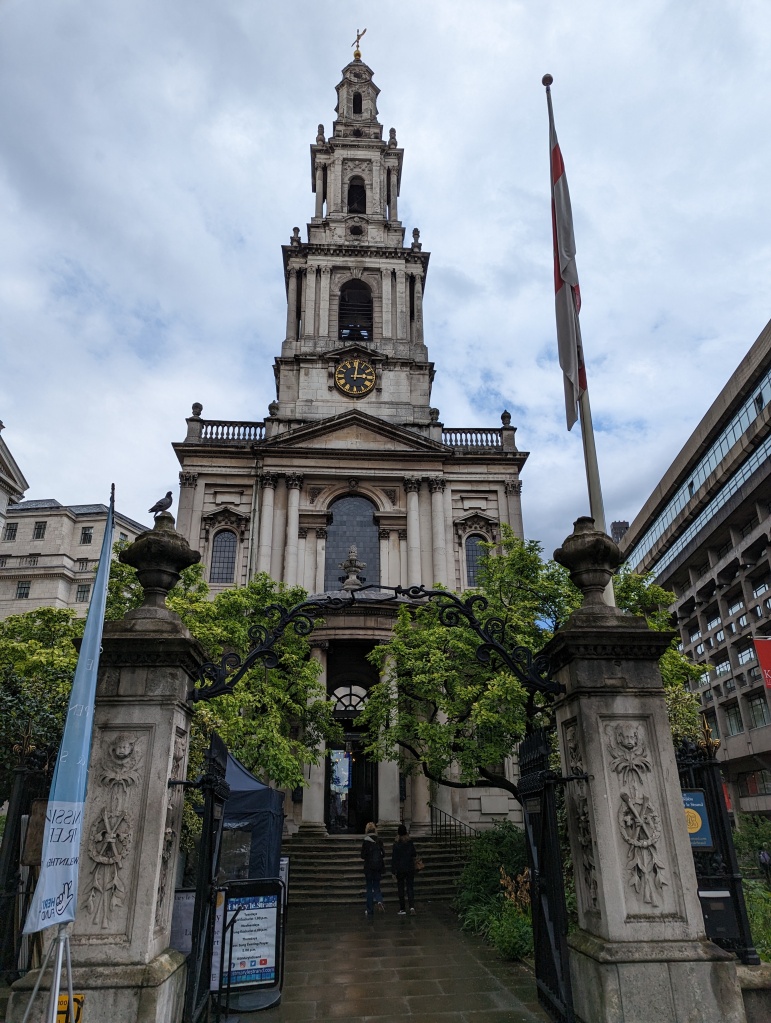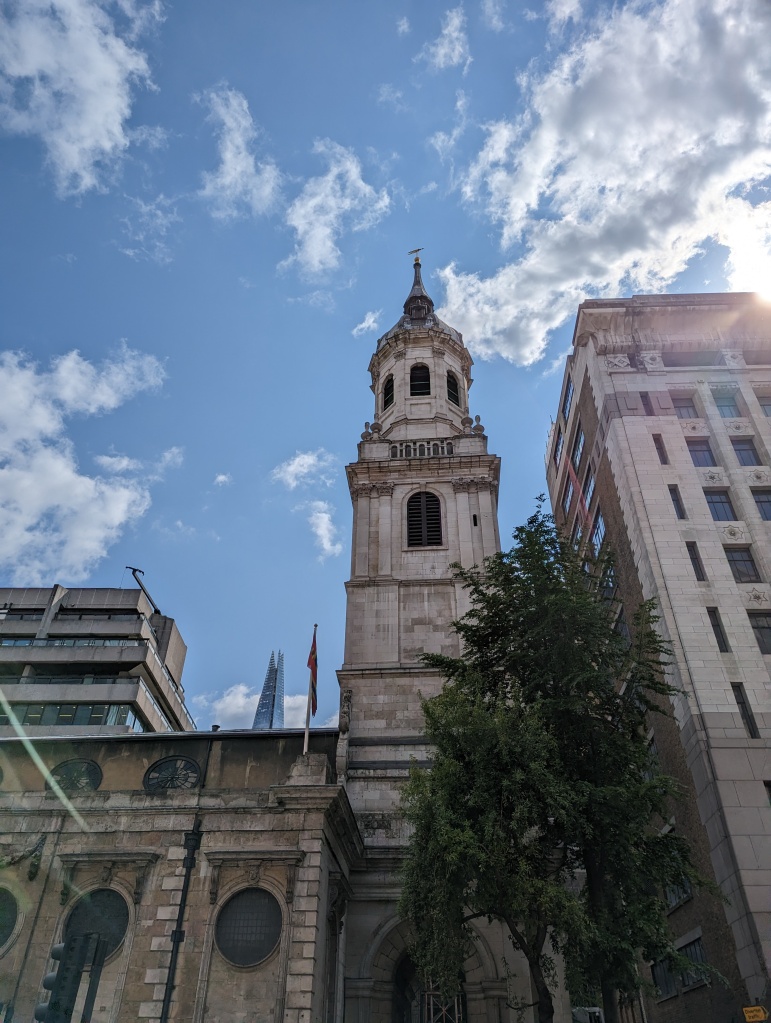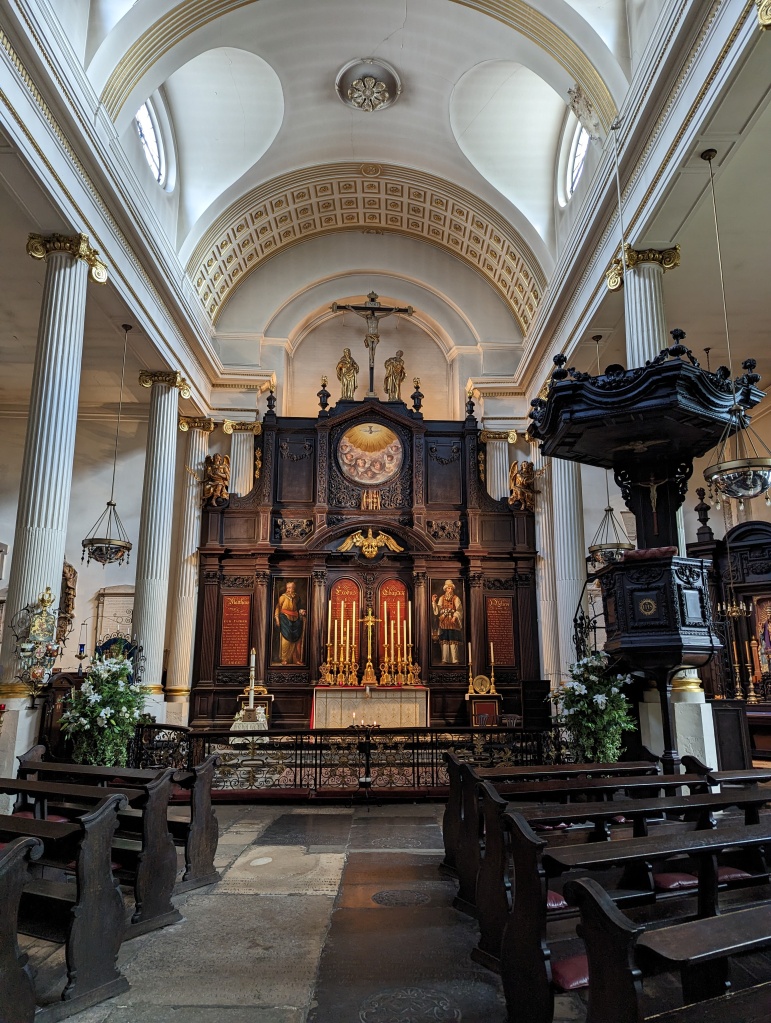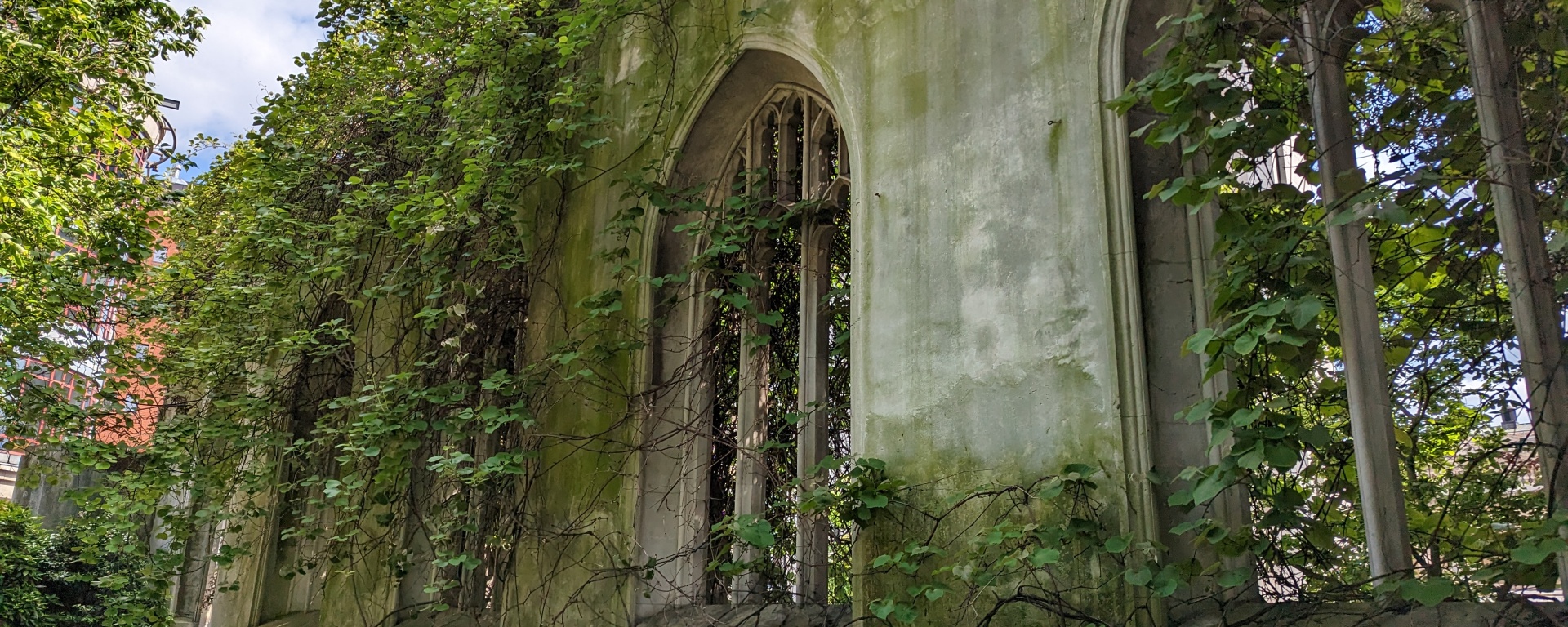When “church” and “London” are mentioned in the same sentence, Westminster Abbey or St. Paul’s Cathedral are most often the first sites that come to mind. Understandably so, as they are London’s most famous churches, as well as the most prominent churches in the London cityscape. But Westminster Abbey and St. Paul’s Cathedral are not the only churches in London: far from it, in fact. As you walk around London, especially in the City of London (the financial district and, also, the oldest part of London), you will find churches everywhere, once you start looking. This was certainly my experience on my recent trip to London. While walking down the Strand, I came across two churches that I hadn’t heard of before, although they were hardly hidden, as they sit right in the middle of the Strand. After touring them, I set out to find more of London’s not-so-hidden churches. Below is a brief tour through the five churches I discovered on this trip. Many more remain to be visited – an exciting proposition, since I love London and church architecture!
St. Mary le Strand: As its name suggests, St. Mary le Strand sits in the middle of the Strand, close to Somerset House and King’s College London. Constructed between 1714 and 1724, the church is the second church named St. Mary le Strand (the original was demolished in 1549 to make way for Somerset House). The current church is a good example of English Baroque architecture, with an ornately decorated ceiling, although it is not nearly as extravagant as Baroque churches in Italy. In 1982, St. Mary le Strand was chosen as the official church of the Women’s Royal Naval Service (WRNS or “Wrens”). A Book of Remembrance is located in the church, listing the names of WRNS servicewomen who died in service in World War I and World War II.


St. Clement Danes: A very short walk down the Strand from St. Mary le Strand is St. Clement Danes. While the current church building was completed in 1682 by Sir Christopher Wren (the architect of St. Paul’s Cathedral, as well as many other churches in London), there has been a church on this site since the 9th century. The origin of the name St. Clement Danes is not entirely known, but the most popular explanation, endorsed by the church, is that, in the 9th century, Danish settlers (Vikings) who had married English wives were allowed to settle in the area. They took over an existing church dedicated to St. Clement, which became known as St. Clement of the Danes, or, over time, just St. Clement Danes. The current church building was constructed between 1680 and 1682 to Christopher Wren’s design. Like St. Mary le Strand, St. Clement Danes is a Baroque church, although the architecture of the two churches is by no means identical. In May 1941, at the end of the Blitz, St. Clement Danes was almost destroyed by bombing; the interior was gutted, but the outer walls and tower survived. Following fundraising efforts by the Royal Air Force after the war, the church was restored and reconsecrated in 1958. Today, it is the Central Church of the Royal Air Force.


St. Magnus-the-Martyr: A good deal east of St. Clement Danes lies St. Magnus-the-Martyr, which is located in the City of London, not too far from the Monument to the Great Fire of London. The church’s name refers to St. Magnus the Martyr, earl of Orkney, who was executed in 1118; as he had a reputation for piety, he was canonized as a saint in 1135. The first church on the site was constructed not long after St. Magnus’s death, as it was likely in existence by 1128-1133. This original church sat directly on the approach to London Bridge; today, the church is located just off the approach to the bridge. During the Great Fire of London in 1666, the original St. Magnus-the-Martyr was one of the first buildings to be destroyed, as it was less than 300 yards from Pudding Lane, where the fire began. The current church was built between 1671 and 1687 under the direction of Christopher Wren. When Old London Bridge was demolished in 1831 and a new bridge built slightly upriver, the church was no longer located on the approach to London Bridge. Having escaped major damage during the Blitz, St. Magnus-the-Martyr still stands in its original location. However, as the area around it has changed, it is now almost completely surrounded by modern buildings.


St. Dunstan in the East: A short walk from St. Magnus-the-Martyr is St. Dunstan in the East or, more accurately, the ruins of St. Dunstan in the East, which now form a small public garden. The church of St. Dunstan in the East was originally constructed around 1100. Severely damaged in the Great Fire of London, the church was restored – rather than completely rebuilt, as in the case of St. Magnus-the-Martyr – between 1668 and 1671. A tower and steeple, designed by Christopher Wren, was added between 1695 and 1701. In 1941, the church was severely damaged during the Blitz. Only Wren’s tower and steeple and the north and south exterior walls survived; the interior of the church was completely destroyed. After the war, the Church of England in London was reorganized, and it was decided not to rebuild St. Dunstan in the East. In 1967, the City of London Corporation decided to turn the ruins of St. Dunstan into a public garden, which opened in 1970.


St. Botolph without Aldgate: Furthest east of these five churches is St. Botolph without Aldgate, located adjacent to the Aldgate Tube station and very close to the hotel where I stayed while in London. The name refers to the fact that the church was located just outside of (or without) London’s city walls; Aldgate was the eastern gate through the walls into London. The church thus sits at the far eastern edge of the City of London and the beginning of the East End of London. There has been a church on this site since at least 1125, and possibly before that (although evidence of a church on this site in Anglo-Saxon times is sketchy). The current church of St. Botolph without Aldgate was built between 1741 and 1744 to replace the old church, which had become dilapidated. While the church survived the Blitz with only minor damage, a fire in 1965 damaged the interior of the church, which was subsequently restored.


